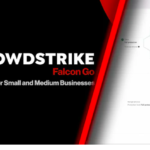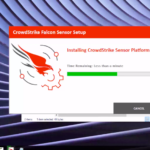Buying a home is an exciting milestone, but also a major financial commitment. Mortgage insurance provides protection for lenders if borrowers default. But this adds to monthly housing costs. Understanding what mortgage insurance is, when it’s required, and how much it costs helps homebuyers plan wisely. This guide covers key details to know.
What is Mortgage Insurance?
Also called private mortgage insurance or PMI, this is an insurance policy protecting the lender if the borrower stops making mortgage payments. It reimburses missed payments to the lender so they avoid losses. Mortgage insurance gets triggered when borrowers put less than 20% down on a home purchase. This represents higher risk of default, so lenders require the extra protection.
Mortgage insurance gets paid as part of the regular monthly mortgage payment. It typically ranges from 0.5% to 1% of the total loan amount annually. On a $200,000 loan at 0.5%, the annual premium would be $1000 paid in installments of around $83 per month. Mortgage insurance premiums are not tax deductible.
When is Mortgage Insurance Required?
The most common trigger for mortgage insurance requirements is making a down payment of less than 20% of the home purchase price. Putting down less than 20% indicates higher risk for lenders, so they require insurance protection against losses in case of borrower default.
Here are the standard mortgage insurance requirements based on down payment amount:
- Less than 10% down – Mortgage insurance required
- 10% to less than 15% down – Mortgage insurance often required
- 15% to less than 20% down – Mortgage insurance sometimes required
- 20% or more down – Mortgage insurance usually not required
So for a $300,000 home, a down payment of under $60,000 would trigger the need for mortgage insurance. Factors like the buyer’s credit score, debt-to-income ratio, and loan type also get considered in setting mortgage insurance rates.
How Much Does Mortgage Insurance Cost?
Typical mortgage insurance rates range from 0.5% to 1% of the total loan amount per year. On a $250,000 home loan, annual mortgage insurance premiums may range from $1250 (0.5%) to $2500 (1%). This cost gets divided into monthly payments.
For example, on that $250,000 loan amount:
- 0.5% rate = $1250/year = About $104 per month
- 1% rate = $2500/year = About $208 per month
So for a higher risk borrower, mortgage insurance could tack over $200 onto the monthly housing payment. Monthly premiums depend on:
- Borrower’s down payment percentage
- Borrower’s credit score and overall financial profile
- Loan type – FHA, conventional, USDA, VA, etc.
- Lender’s rate policies
Government programs like FHA loans have fixed mortgage insurance rates based on the loan amount. Conventional loans grant more discretion to lenders in setting premiums based on borrower risk factors.
How Long Must Mortgage Insurance Be Paid?
Mortgage insurance typically lasts until the borrower builds up 20% equity in the home through payments and appreciation. Once 20% equity gets reached, the insurance requirement terminates automatically. This generally takes 8 to 10 years.
However, borrowers don’t have to wait to hit the 20% mark. They can often request cancellation of mortgage insurance coverage once equity reaches:
- 15% of the original home value on conventional loans
- 11% of the original home value on FHA loans
So checking home values and carefully tracking equity buildup allows ending mortgage insurance payments earlier, eliminating this added cost.
Strategies to Avoid Mortgage Insurance
Since mortgage insurance drives up monthly housing payments, it’s smart to explore strategies to limit or eliminate the premiums. Options include:
- Save a larger down payment – Reaching 20% down exempts borrowers from mortgage insurance requirements. This takes discipline, but avoids recurring premiums.
- Ask lenders about exceptions – Some lenders agree to waive insurance for certain borrowers with strong credit profiles and financial cushions even below 20% down. It never hurts to ask!
- Compare lender rate policies – Mortgage insurance rates vary, so shop different lenders to find the lowest premiums your situation qualifies for.
- Get lender-paid MI – Occasionally lenders will pay the ongoing premiums themselves if borrowers agree to slightly higher interest rates. This rolls costs into the loan instead of monthly bills.
- Pay premiums lump sum – Paying yearly or monthly insurance premiums in a lump sum upfront at closing may qualify for discounts from some insurers.
With smart planning and research, homebuyers can avoid overpaying for unnecessary mortgage insurance protection on their loans.
Frequently Asked Questions
Can I cancel mortgage insurance at any time?
Yes, once you reach 20% equity either through payments or home value appreciation, mortgage insurance can get terminated. You can also request earlier cancellation once hitting the threshold for conventional (15%) or FHA (11%) loans.
Does mortgage insurance protect me as a homeowner?
No, it strictly protects the lender against losses in case you fail to repay the loan as agreed. Homeowners insurance is what safeguards homeowners against property damage and liabilities. Mortgage insurance only shields the lender.
Can I deduct mortgage insurance premiums from my taxes?
Unfortunately, private mortgage insurance premiums no longer qualify for tax deductions as of 2018 tax reform laws. Only mortgage interest and property taxes remain deductible for homeowners.
Does mortgage insurance last the full length of the loan?
No, it typically lasts only until you build up 20% home equity through payments and appreciation, which often happens in 8-10 years. You can also request cancellation earlier upon reaching 15% equity for conventional loans or 11% for FHA.
Can I avoid mortgage insurance with a larger down payment?
Yes, 20% or higher down payments make mortgage insurance unnecessary for most loans since this represents lower risk for the lender. Reaching that 20% down payment threshold lets you avoid monthly premiums.
In The End
Mortgage insurance protects lenders when borrowers with less than 20% down seek home loans. This common requirement comes with significant added monthly costs that amplify housing payments for buyers. Understanding what triggers mortgage insurance, how premiums get calculated, and techniques to minimize or cancel coverage helps homeowners save money. With diligent research and smart down payment strategy, buyers can avoid overpaying for mortgage insurance.










